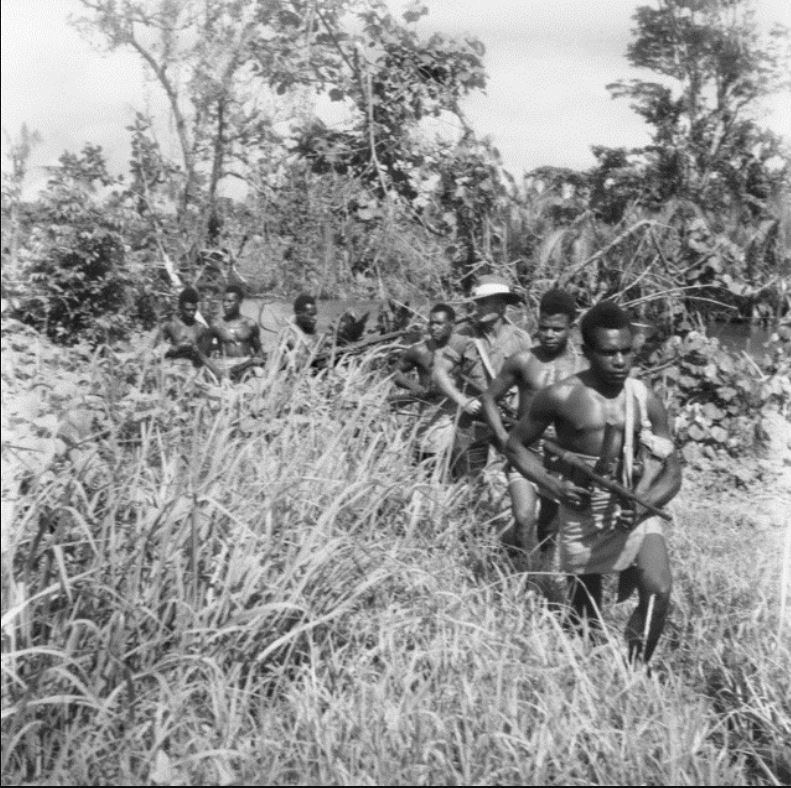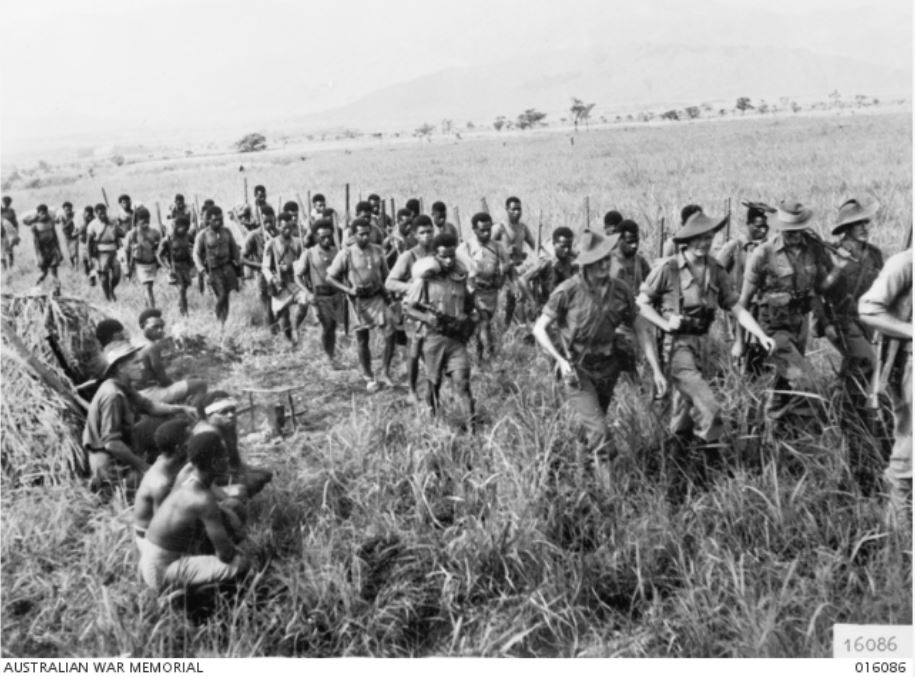1st Papuan Infantry Battalion
From Our Contribution
Contents
[hide]Brief History
Formed in early 1940 in Port Moresby to help defend the territory in the event of a Japanese invasion, its soldiers were primarily Papuan natives led by Australian officers and non-commissioned officers. Slow in forming, the first members of the PIB were not officially posted in until March 1941. By 1942 it consisted of only three companies, all of which were under-strength and poorly equipped. the battalion served in many of the Allied campaigns in New Guinea; however, due to the nature of its role its sub-units mainly operated separately, attached to larger Australian and US Army units and formations, employed on scouting, reconnaissance and surveillance patrols against the Japanese, where the natural bushcraft of its native soldiers could be used to their advantage.
The battalion was sent to patrol the northern coast of Papua in June 1942 and was dispersed over a wide area. These small parties were the first to make contact with the Imperial Japanese forces soon after their landing (23 Jul 1942 when 38 PIB troops ambushed the Japanese advance Guard). As part of Maroubra Force, the battalion fought alongside the 39th Battalion at Kokoda, Deniki, and Isurava as the Japanese forced them back along the Kokoda track, but was withdrawn before the campaign finally turned in favour of the Australians. The battalion took part in the advance to Salamaua in 1943, before fighting along the Markham, Ramu, and Sepik rivers during the Ramu Valley – Finisterre Range campaign, and on the Huon peninsula, assisting in the capture of Finschhafen and Sattelberg, and pursuing the Japanese as they retreated along the northern coastline towards Saidor in 1943–1944.
In 1945, it was deployed to Bougainville where the battalion's companies were spread across the fronts from Bonis to Buin during the final months of the war. Such was their effectiveness that the Japanese referred to them as "Green Shadows" due to their ability to fade into and appear from the jungle unexpectedly. Their soldiers became known for their ferocity and tenacity. After the end of the war the battalion was used to guard Japanese prisoners of war, before being disbanded in August 1946. Casualties suffered were 32 killed and 15 missing, 42 died of illness and 25 wounded.
Battalion Personnel
Battle Honours
- South West Pacific 1942–45
- Kokoda Trail
- Kokoda–Deniki
- Nassau Bay
- Tambu Bay
- Finschhafen
- Scarlet Beach
- Liberation of Australian New Guinea
- Sio–Sepik River
- Kaboibus–Kiarivu
- Bonis–Porton.
Individual Honours
- 1 x Distinguished Service Order
- 3 x Military Cross
- 1 x George Medal
- 3 x Distinguished Conduct Medals
- 15 x Military Medals
- 3 x Mentioned in Despatches
Notes

